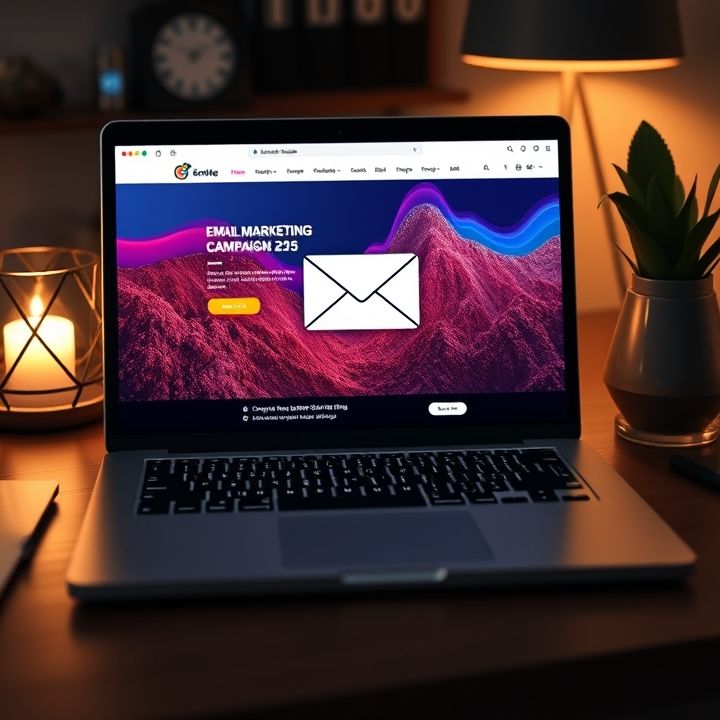Table of Contents
- Introduction
- Understanding the Importance of Call-to-Action (CTA) Buttons
- Crafting Compelling and Action-Oriented Language
- Designing Visually Striking and Noticeable Buttons
- Utilizing Strategic Placement to Enhance Visibility
- A/B Testing for Optimal Button Performance
- Conclusion
- Frequently Asked Questions
Introduction
Welcome to the secret world of email marketing magic, where your call-to-action (CTA) buttons don their capes and transform into unstoppable conversion machines! If you’ve ever felt like your emails are disappearing into the void, leaving you wondering what unicorn sorcery marketers are using to achieve those jaw-dropping click-through rates, you’re not alone. Whether you’re a seasoned email campaign wizard or a novice just beginning to spin your web, understanding the art of the CTA can drastically alter your results.
Here’s a glimpse into what lies ahead in this article:
| Technique | Description |
|---|---|
| Personalization | Adjust your CTA to align with the reader’s preferences and past behavior. |
| A/B Testing | Experiment with different CTAs to uncover what resonates best with your audience. |
| Design Optimization | Make your CTA button irresistible with eye-catching designs and compelling copy. |
Let’s get your emails noticed and your clicks soaring! Your journey starts with the perfect CTA, and by leveraging the right strategies and techniques, you’ll soon unlock the full potential of your email campaigns. Keep reading to discover the secrets of maximizing your email CTA click-through rates!
Understanding the Importance of Call-to-Action (CTA) Buttons
Call-to-action (CTA) buttons play a pivotal role in email marketing as they directly influence the recipient’s engagement and drive the desired action. A well-crafted CTA button can significantly enhance click-through rates, making it a crucial component of any email campaign. Understanding its importance begins with recognizing that a CTA serves as the bridge between the message you convey and the action you wish the recipient to take. Be it signing up for a newsletter, downloading a guide, or making a purchase, the CTA must be compelling and clear.
To maximize effectiveness, the button should be visually distinct, using contrasting colors to capture attention. The language used should be concise yet impactful, encouraging urgency or highlighting a benefit. Moreover, placement within the email affects engagement; it’s often best positioned above the fold where it’s immediately visible without scrolling. Additionally, CTAs should be mobile-friendly to accommodate users on various devices. Ultimately, a strategic approach to crafting and positioning CTA buttons can significantly impact email performance, transforming passive readers into active participants.
Crafting Compelling and Action-Oriented Language
Crafting compelling and action-oriented language for email call-to-action (CTA) buttons is essential for boosting click-through rates. A successful email CTA should be clear, concise, and motivating, capturing the recipient’s attention and prompting immediate action. The language used in a CTA button must resonate with the audience, employing words that emphasize value and urgency. Action verbs such as ‘discover,’ ‘explore,’ or ‘start’ drive engagement by encouraging the reader to take the next step smoothly. Additionally, incorporating an element of urgency or exclusivity, such as ‘limited time offer’ or ‘join now,’ can significantly enhance response rates.
Beyond the choice of words, the tone of the CTA message should align with the brand’s voice, whether it is professional, friendly, or quirky. Personalization is another powerful technique; including the recipient’s name or using phrases like ‘for you’ can make the CTA feel tailored and more inviting. Testing various phrases and styles can help identify what resonates best with the target audience. It is crucial to ensure the CTA button stands out visually with a contrasting color that draws the eye, complementing the clickable and persuasive language used. Ultimately, a well-crafted CTA button should guide the reader with a sense of purpose and anticipation.
Designing Visually Striking and Noticeable Buttons
Designing visually striking and noticeable buttons is crucial for optimizing email call-to-action (CTA) buttons to achieve higher click-through rates. An effective button should capture the recipient’s attention immediately. One technique is to use contrasting colors that stand out against the email’s background, making the button pop. This ensures that the CTA doesn’t blend in with other elements, directing focus precisely where you want it.
Another key element is size. The button should be large enough to be easily clickable, especially on mobile devices, but not so large that it overwhelms the entire message. A balance must be struck to guide the reader’s eye naturally toward the desired action. Additionally, incorporating white space around the button enhances its visibility, giving it room to breathe and allowing it to be more noticeable.
Text on the button should be concise and compelling. Phrases like ‘Buy Now,’ ‘Learn More,’ or ‘Get Started’ are action-oriented and prompt the recipient to click. It is also vital to ensure the font is easy to read by choosing an appropriate size and style. Another tip is to test different variations of button designs to determine which resonates most with the audience, continuously refining the approach for optimal results.
Utilizing Strategic Placement to Enhance Visibility
Utilizing strategic placement of call-to-action (CTA) buttons in emails is a crucial technique to enhance their visibility and effectiveness, leading to higher click-through rates. The positioning of these buttons can significantly influence a reader’s interaction with your email. Typically, a CTA button should be placed prominently where it’s easy to spot and interact with. One strategy is to place it above the fold, ensuring it’s visible without the recipient needing to scroll. This immediately captures attention and encourages quick action.
Additionally, repeating the CTA button at both the top and bottom of the email can reinforce the message, catering to both those who decide quickly and those who need to read through the content before taking action. Another effective method is to surround the button with ample white space, making it stand out more against other elements. It’s also beneficial to consider the natural reading pattern, often an “F” or “Z” pattern, where users’ eyes naturally gravitate. Understanding this tendency allows designers to place buttons where they are most likely to be seen.
By employing these placement strategies, the likelihood of recipients engaging with the CTA buttons increases, thus boosting the overall success of email campaigns.
A/B Testing for Optimal Button Performance
A/B testing is an effective technique used to optimize email call-to-action (CTA) buttons for higher click-through rates. This method involves creating two versions of an email, each with a slightly different CTA button, and sending them to a randomly segmented audience. The goal is to determine which version performs better in engaging recipients to click on the button. Key variables to test include button color, size, text, and placement.
For instance, a bright color may attract more attention, while concise and compelling text such as ‘Get Started Now’ might encourage immediate action.
Placement also matters; a button placed near the top of the email may be seen faster, increasing chances of interaction.
By analyzing the performance data from each version, marketers can gain insights into recipient preferences and behavior, leading to a more informed decision on which CTA button configuration should be widely implemented.
Regular A/B testing not only enhances CTA button effectiveness but also helps refine overall email marketing strategies, ensuring that each campaign is optimized for maximum engagement and conversion potential.
Conclusion
Mastering the art of crafting compelling call-to-action (CTA) buttons is essential for maximizing the effectiveness of your email marketing campaigns. By understanding the pivotal role these buttons play in guiding recipients toward desired actions, marketers can significantly enhance their click-through rates. The strategic use of action-oriented language, visually appealing design, and optimal placement strategies collectively form the backbone of successful CTA implementation. Employing contrasting colors, clear and concise text, and personalization ensures that your CTAs stand out and resonate with the audience’s interests and needs.
Furthermore, the power of A/B testing cannot be underestimated, offering invaluable insights into what truly captures the attention and engagement of your audience. By continually experimenting with different variables such as button color, size, and text, and analyzing the results, you can fine-tune your approach to achieve the most effective outcomes. Armed with these proven techniques, your email campaigns can transform from mere messages into powerful tools that convert passive readers into active participants, ultimately driving business success by fostering stronger connections and encouraging desired actions.

